How Culinary and Gastronomic Applied Research Bring To Life Ancient Flavors
A chronicle, a dinner, SlowFood, and a touch of Chef: Cuccalar, Fanzelto, Rufioi, Spin corn, and more.
For my birthday this year, I decided to go full SlowFood (after all, I am a member of the association) and bring my closest family out for a special dinner, all focused on the relationship between ancient local grains, their traditional preparations, and extra virgin olive oil.
Some of my favorite gastronomic topoi, as you know.
The dinner was hosted at Boivin, a SlowFood restaurant in Levico Terme, Italy. I can subscribe to its motto: “Trentino cuisine and fantasy. That's it. We cook using water, fire, and the necessary time.”
The resident chef, Riccardo Bosco, invited his colleague, Cook and Chef Paolo Betti, whom we had already met when he led the workshop for beans sommeliers.
Boivin is located in an ancient 16th-century building in the historic center of Levico Terme in Valsugana, a Thermal town mirrored in the waters of a beautiful Alpine lake enshrined by mountains. Its name, “Boivin,” is a word in the local dialect meaning the place where the grape must “boil”—what we call today ferment.
Boivin opened in the 1960s when Bosco’s father restored the old stables and vaults of the family home to host a location where guests could drink wine and eat Speck and Schüttelbrot. Nowadays, Boivin is a proper restaurant, but its soul remains that of a convivial place where guests can taste the wines and foods of the region. It is also a well-known venue for events, a member of SlowFood, and a proud one.
This dinner idea came from Chef Betti`s ongoing work since February 10, the UN World Pulses Day.
With this initiative, the Chefs try to raise awareness of the importance of grains and pulses for our health, the environment, small-scale economies, and food education. Slow Food Alliance chefs were busy colouring their menus with chickpeas, beans, lentils, and grass peas, inviting customers to discover all the goodness (and health) of a diet that favors legumes.
The Slow Food Alliance is a pact between chefs and small producers to promote good, fair, and clean local foods and save biodiversity. We are all invited to join in, one forkful at a time.
FANZELTO DI TERRAGNOLO, TROUT TARTARE, APPLES AND BEURRE BLANC
Fanzelto has been known in the Terragnolo valley for many generations.
Its preparation probably arose to cope with the shortage of wheat and, therefore, of white flour. Today's production is minimal, so this bread and its long tradition are at severe risk of disappearing. The recipe below is traditional, but you can try this one for a twist. I have linked it here.
To prepare 12 Fanzelti, you'll need 350 grams of buckwheat, five glasses of water, 9 grams of salt, and olive oil. Begin by gently mixing the salt and water into the buckwheat flour, adding the water until you achieve a soft and creamy dough.
In the meantime, heat a cast iron or non-stick pan with a drizzle of olive oil until it is very hot. Using a ladle, pour the prepared mixture into the pan to form fanzelti and fry them on both sides until golden brown and crispy.
My grandmother Elda used to make this for breakfast, and I always thought it was a local, poor version of the Crêpe Bretonne (a recipe that needs eggs and milk in the batter, plus resting time).
Curiously, of all Trentino, Rovereto (near where Terragnolo is located) is historically the most “French” town: the language was studied in school there instead of German (at least at my time and back in my mum’s time, too).
I wonder if this recipe and the francophonie of the city date back to Napoleon and the Battle of Rovereto. I imagine a young Breton soldier or troop cook getting in touch with a local and exchanging food, and that is how an imported recipe becomes a familiar staple for a small population. Who knows?
The fanzelto is a very powerful “bread.”
This dinner chose to pair it with very mellow ingredients (trout tartare, beurre blanc, and a delicate olive oil from Liguria). The fanzelto shone in its whole glory, leaving the rest of the pairing a bit in shadow.
I would have paired fanzelto with cold-smoked trout or gravlax trout instead: it has a strong flavour and can withstand a side that is a meal.
My family traditionally eats fanzelto at breakfast, paired with strong mountain cheese and pickles. We call it tortél di formentón, not to be confounded with torta de formentaz, a preparation I already wrote about earlier.
CUCCALAR DELLA VALLE DEI MOCHENI WITH LEONFORTE LARGE BROAD BEAN PUREE
Cuccalar is deeply linked to the Valle dei Mocheni. Actually, we already encountered it when we visited Mas del Saro (I also provide a reliable recipe for this ancient bread in the article).
Cuccalar is a rustic, unleavened bread kneaded with wheat flour, rye flour, salt, and buttermilk. A very popular ingredient in past communities, buttermilk is now almost in disuse in Trentino (it is obtained by processing the beaten cream from which butter is made, and is quite a regular meal drink for Dutch and Germans alike).
Chef Betti cleverly used it like a piadina, filling it with a simple purea of broad beans.
Fava Larga di Leonforte instead comes from Sicily, and according to SlowFood, “Broad beans from Leonforte cook easily and do not need to be soaked for a long time (like other legumes). At the end of March, there are the green ones, just picked: they are soaked in salt with onions and eaten with pecorino cheese (favaiana and cipuddetti) or the frittedda is cooked by frying them in extra virgin olive oil with bacon and onions and then cooking over a low heat.”
Using pureed beans as a sort of “hummus” is a quick, clever, and delicious way to increase our consumption of these ingredients. It can also perfectly substitute any animal-based filling for an impromptu panini to bring along on excursions.
I would also like to see it more in mountain huts and rifugi, as it is cheap, crowd-pleasing, easy to make and store, and environmentally friendly—much more than a Brazilian Bresaola or a Polish Speck.
This plate was topped with a generous serving of olive oil from Puglia.
It was delicious, and all the guests were delighted to mop up the olive oil and the infused oil with their spoonfuls of “broad bean hummus,” an uncommon preparation for most attendees.
SOUP WITH LEGUMES, WINTER VEGETABLES AND SPIN CORN FROM VALSUGANA
According to SlowFood, Spin's fundamental characteristic that distinguishes it from other corn varieties is the presence on the crown of the caryopsis of a conical tip facing towards the apex of the ear, the rostrum, with an upward beak.
The primordial genotypes of the current Spin di Caldonazzo can be traced in Peru, Ecuador, Brazil, Bolivia and Argentina. This corn has effortlessly acclimatized to the Alpine valley, where it was propagated and maintained since the 1930s, “with the chosen seed improved by Zapparoli at the former Experimental Station of Corn Cultivation in Bergamo”.
The soup was topped with a generous serving of extra virgin olive oil from Puglia, bitter and intense. A perfect match, especially when you would use the accompanying slice of dry, crunchy wholewheat bread as a sponge to absorb the most liquid parts of this hearty, thick and comforting soup.
A true ode to the winter lingering on all the mountaintops surrounding the valley.
Bravo, Chef!
If you manage to get some Spin corn, you could instead perhaps make gnocchi di polenta:
For six people, you'll need 400 g of Spin Corn from Valsugana, 1 litre of water, and 50 g of Trentingrana. You'll also require 40 g of alpine butter, three egg yolks, two tablespoons of extra virgin olive oil, and salt for seasoning.
Start by bringing the water to a boil with a handful of salt and olive oil, then gradually add the corn while whisking to achieve a consistent mixture. Allow it to cook for half an hour on low heat, stirring occasionally with a wooden spatula. Once the polenta is ready, mix in a couple of handfuls of grated Trentingrana, and the egg yolks. To serve, form quenelles of the polenta using two spoons, place on a plate, then finish by drizzling with melted butter topped with a sprinkle of Trentingrana.
Yum!
RYE RUFIOI WITH LEEKS, POTATOES AND CHEESE BY MALGHESI DEL LAGORAI
Rufioi are one of the hundreds of filled pasta variations—and you may already be familiar with ravioli, scarpinócc, or agnolotti.
Rufioi is a specialty of the Val dei Mocheni and Valsugana.
It is square pasta tortelli filled with cabbage, leek, cinnamon, and Trentino grana, briefly boiled and then seasoned with brown butter and grana. Chef Betti prepared them very interestingly, using rye flour to infuse them with a delicious, distinctive taste. Once again, bravo!
Formaggio di malga del Lagorai is another Slow Food Praesidium, a semi-fat raw milk mountain cheese, produced from June to September high up in the Lagorai mountains from grigio alpina, bruno alpina and pezzata rossa cows.
The milk is skimmed and left in steel containers in the casélo - a cool, semi-dark room added to the following day’s milking. The cheesemaking takes place only with natural rennet.
One caution: as in many other cases in Italian traditional gastronomy, “a name is a name" is a name”: in the (relatively near) Ampezzo area, another plate entirely has this exact name.
According to the Accademia Italiana di Cucina, in Ampezzo, rufioi are small cylinders pointed at the ends and seasoned with melted butter and abuntant grated zigar (a rather unique cheese made with buttermilk, left over from butter processing: the zigar was placed to drain in a cloth bag, then washed, and left to dry on special sticks placed under the fireplace).
In Costeggiola, Rufioi is a dessert akin to carnival’s chiacchiere or grostoli, according to this recipe of Latte & Grappa, who explains: “Rufioi are the typical dessert of Costeggiola, a small town in the province of Verona halfway between Cazzano di Tramigna and Soave. Initially salty, it becomes sweet only later. The filling is surprisingly "umami" for being of peasant origin: it contains amaretti, raisins, pine nuts, candied citron, rum, breadcrumbs and.... parmesan cheese.”
The Valsugana version, instead, is more like tortelloni:
To prepare delicious Rufioi, start with kneading the pasta by combining 200 grams of white flour, two eggs, and a pinch of salt to form a dough. To prepare the filling for the rufioi, boil one cabbage until tender, then chop it finely. In a separate pan, stir-fry a soffritto using 100 grams of butter or olive oil and one leek sliced into thin rings. Once the leek is softened, stir in the chopped cabbage with one tablespoon of sugar, a pinch of cinnamon, salt, and pepper. Mix everything well and add half the grated Parmesan cheese at the end. Roll out the pasta dough and cut it into squares, placing a spoonful of the filling on each before folding them into triangles and sealing the edges tightly. Bring a pot of salted water to a boil and gently cook the Rufioi for 2-3 minutes. Serve them hot, generously topped with grated cheese and a drizzle of melted butter for a delightful finish.
They are a true delicacy, and I can imagine myself preparing again.
STEAMED COREGONE (WHITEFISH) FROM LAKE CALDONAZZO WITH WILD AQUATIC HERBS (collected by Expert Stefano Mayr)
Coregone Lavarello, originally from Lake Constance, is a whitefish introduced into Lake Garda in 1918, where it has acclimatized. Today, a large part of the income of professional fishermen operating in the lake (and other lakes in Trentino, like Caldonazzo) is based on this species.
Unfortunately, the fishermen operating in the area had no luck with fishing, and Chef Betti had to resort to his trusted trout provider instead. Hence, the plate featured this fish, and not coregone.
This happens when you work with local, seasonal, and available ingredients. Sometimes, you need to find an alternative route as nature is wild, and not domesticated as we may think when we see all the products in a line on a supermarket shelf.
Life is another thing, and “real” food is alive.
Of course, the star of this plate was the incredible aquatic herbs collected by Stefano Mayr. Besides a delicious watercress, we enjoyed Veronica Acquatica, Budel de galina (Ornithogalum) and more: they all provided an incredible taste.
I would have been happy tasting them with simple white bread and a generous spoonful of olive oil.
DARK CHOCOLATE AND EXTRA VIRGIN OLIVE OIL
Chocolate is not autochthonous in Italy, of course. However, since it was first imported from the Americas, chocolate has been an integral part of the culinary culture of most of Mitteleuropa, so today, we can also consider it part of the culinary traditions here.
For example, Modica chocolate and Gianduiotti in Turin show how a foreign food becomes naturalized and enters a hyper-local culinary tradition alongside other more “autochthonous " foods.
The dessert was a chocolate bean mousse topped with bitter oranges. Something was not quite right in the mousse; I suspect a batch of beans had been roasted excessively, resulting in a bitter and sour note characteristic of cocoa exposed to too much heat.
However, it was a good idea. I ate it all, scooped it up with my spoon, and went home happily.
In 1995, Hervè This invented the perfect chocolate mousse. It is a two-ingredient recipe that seems impossible, but science explains why it is not only possible but perfectly doable without mistake.
Bressanini explains the history behind this water- and chocolate-based mousse in this article, which is completed with the recipe. Still, i wanted to report this paragraph for you: “In 1995, the French chemist Hervè This, analyzing whipped cream with a scientific eye, was the first to realize that chocolate could also be whipped: it contains a significant percentage of fat, like cream, and like cream it also contains an emulsifier, soy lecithin, normally added to dark chocolate to mix the added sugar better. If we add water in the right proportion and cool, as for whipping cream, we can obtain a pure chocolate mousse.”
Topping with flavorful extra virgin olive oil and fleur de sel (like the incredible Salmarim ones) can solve many dessert dramas.
One mention of olive oil is that despite the best intentions for the dinner, the olive oils did not shine in their light - and this is because the diners were not provided with the instrument to independently taste and analyse the olive oils.
Small tasting glasses (like the one above) could have been provided to the diners so that they could independently evaluate the olive oil before putting it onto the served plate. This would have allowed the diners to taste and experiment with the olive oil properly—something perhaps to suggest to the organisers for future events.
As I have abundantly explained in this article, it is of the utmost importance that gastronomers, Chefs, and food enthusiasts join forces to deepen their knowledge, understanding, and, above all, usage of olive oil. In the article, I conclude: “At a fine dining restaurant, be exigent. First, when the sommelier asks about wines, you ask back about their EVOO list, and when they say they only have one olive oil (maybe), please look very disappointed. If you know enough, take some time to politely lecture the sommelier about olive oil's importance and their vintages. Tell them that bad olive oil is like bad wine: it ruins a meal.”
Of course, a mention about wine.
I did not like the wine offered with the meal - the sparkling wine was a Trento Doc, but not one that can shine adequately, and the white wine was a bit dull.
So we politely asked Boivin’s staff to let us into their (excellent) cellar, where we emerged with a very young (perhaps too young, but the night was warm and mellow) Nosiola Fontanasanta by Foradori.
I have been studying and drinking this wine in depth since the vertical event organised by Jacopo Cossater, Matteo Gallello, and Myrtha Zierock to present the 6th Verticale issue at Vinifera in March, which I described extensively here.
You may notice this label of Foradori being slightly different from the one available generally for purchase and featured on their website: this is a special edition you can only purchase at the local shop in Mezzolombardo, right inside Foradori winery. These experimental bottles are sold to be consumed on the territory: I loved finding them here at Boivin, as it means the Chef and owners travel and visit their chosen producers - these bottles can only be picked up and are never shipped.
When I see how alive and ingrained in contemporary gastronomy and culture SlowFood is in Italy, I cannot help but compare how the “local versions” of SlowFood are failing on every account in Portugal.
In Italy, SlowFood is a daily presence in culinary schools, supermarkets, farmer’s markets, restaurants, and anything related to the cycle of food, from production to consumption to the elucubration we make writing about it. In Portugal, nothing is safe from some “Chef’s dinners” that are more of a money-making machine than levers for an actual change.
No wonder Italy has managed, in these past 20 years, to multiply biodiversity, save endangered food sources, and elevate agricultural products rather than succumb to the dictatorship of “templos del producto” à la Spain (aka: meat, offals, cheese, seafood, and fish).
In the week where I went to this dinner, SlowFood and similar concepts of territoriality, preservation of traditional food, innovation on ingredients that are locally cherished, and safeguarding mountain foodways were present:
at a university course in Bolzano,
In a Wine fair,
In a culinary school in Tione,
At the farmers’ market,
I looked through the products presented and featured on the menu in two other restaurants I went to.
This goes hand in hand with the start of the first course in Italy and Europe dedicated to the Cultural Anthropology of Collective Domains and Territories of Life, an innovative initiative of outstanding academic and social value taught by Professor Marta Villa, supported by Slow Food Trentino Alto Adige and the Association of ASUC Trentine. This new educational path aims to explore Collective Domains and Territories of Life, realities that represent models of sustainable management of resources and governance of the territory rooted in local history and culture.
Slow Food is actively involved in protecting the Slow Food Presidia and promoting sustainable agricultural and food practices in the Terre Alte, areas where the Domini Collettivi play an essential role in maintaining biodiversity and the quality of life of local communities.
As a birthday present to myself, I just registered for this 6 ECTS University course, aiming to take the exam later in the year and following the exam as a non-attending student. The first time I put my feet back into a master’s degree study after two years - and for a good cause.


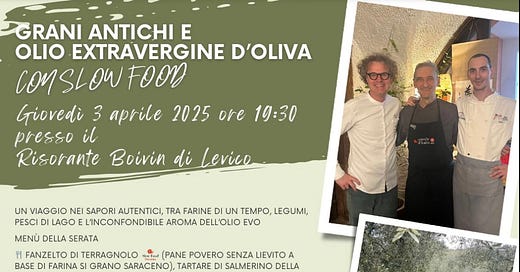




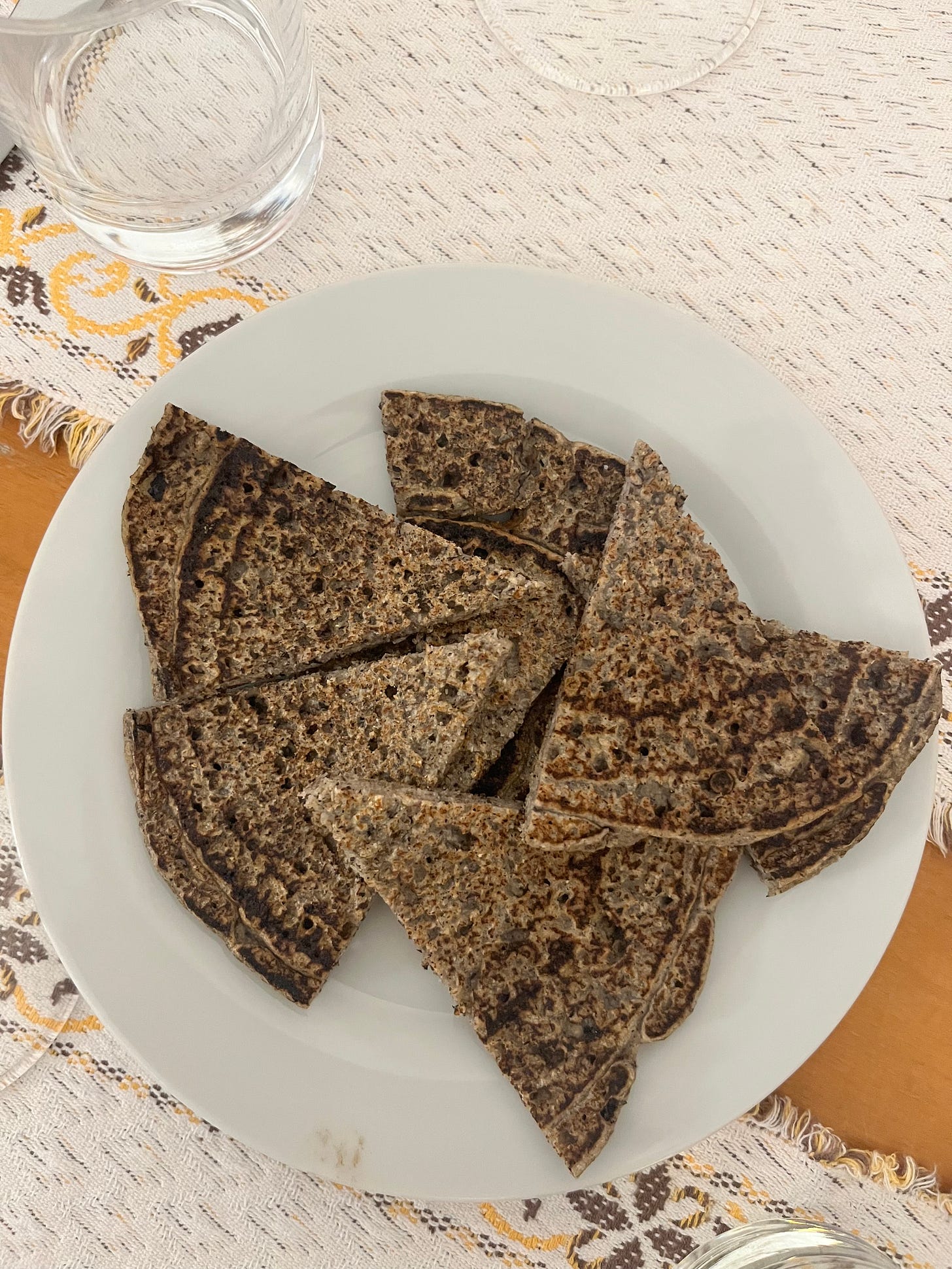


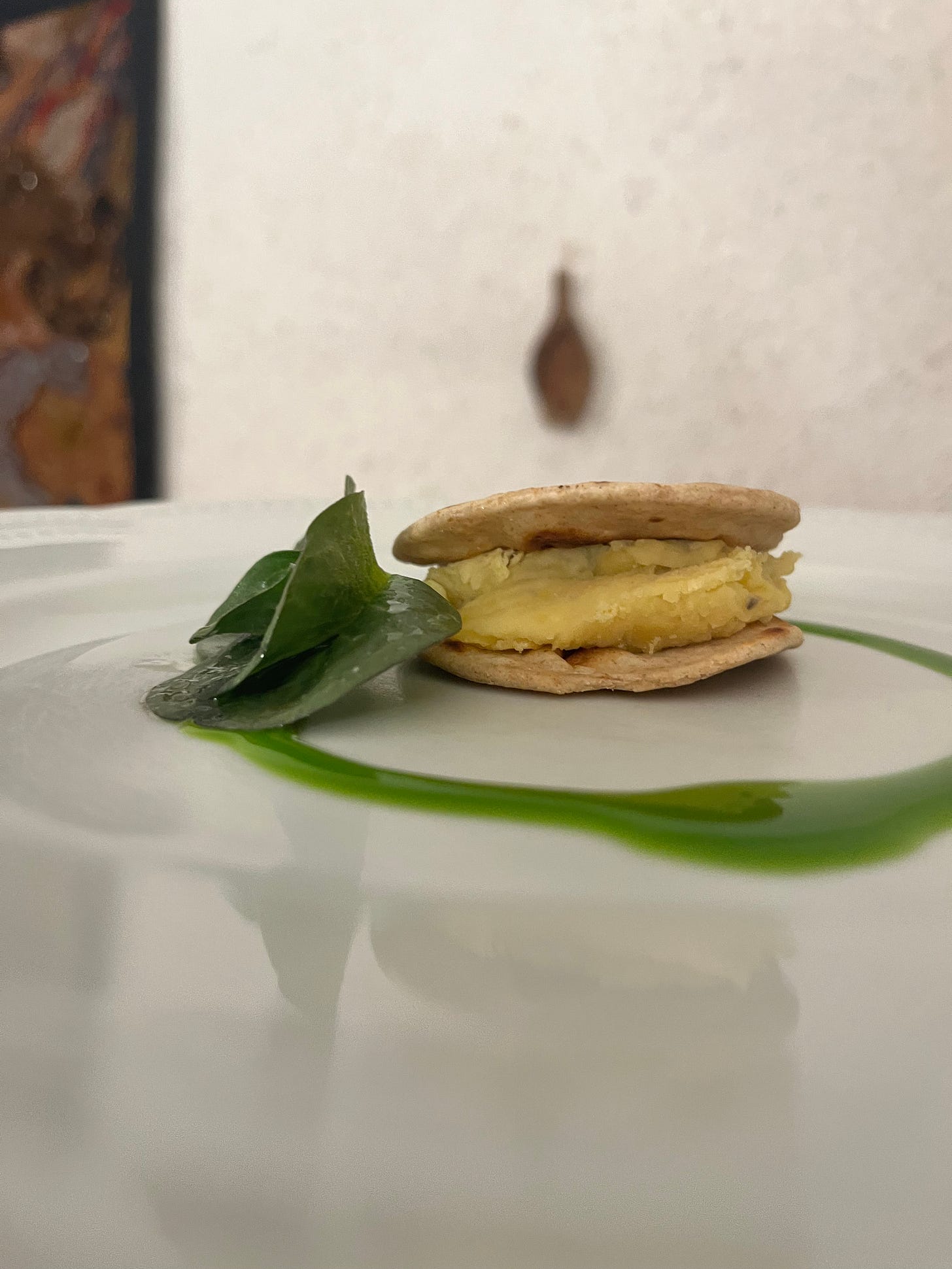




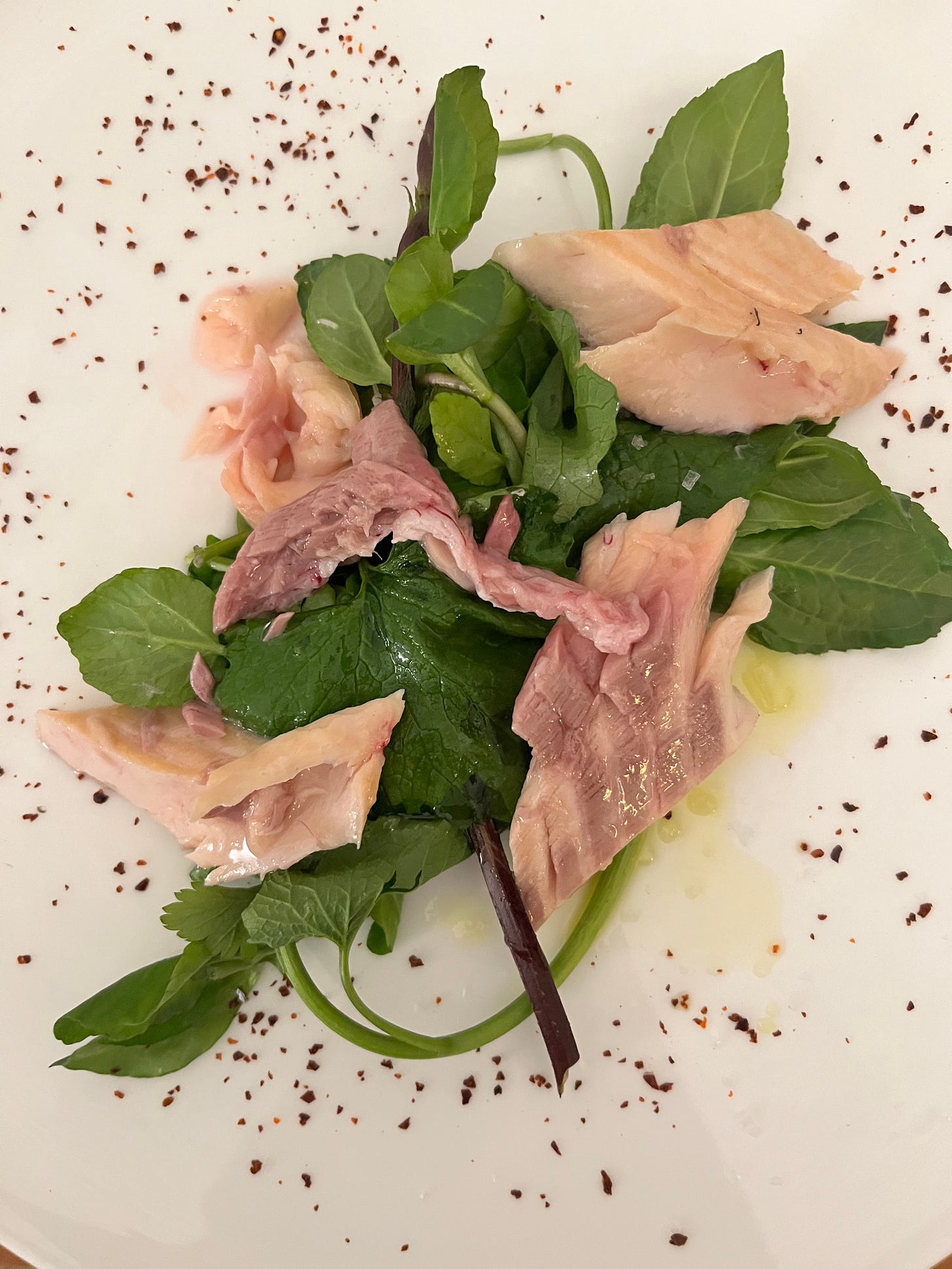

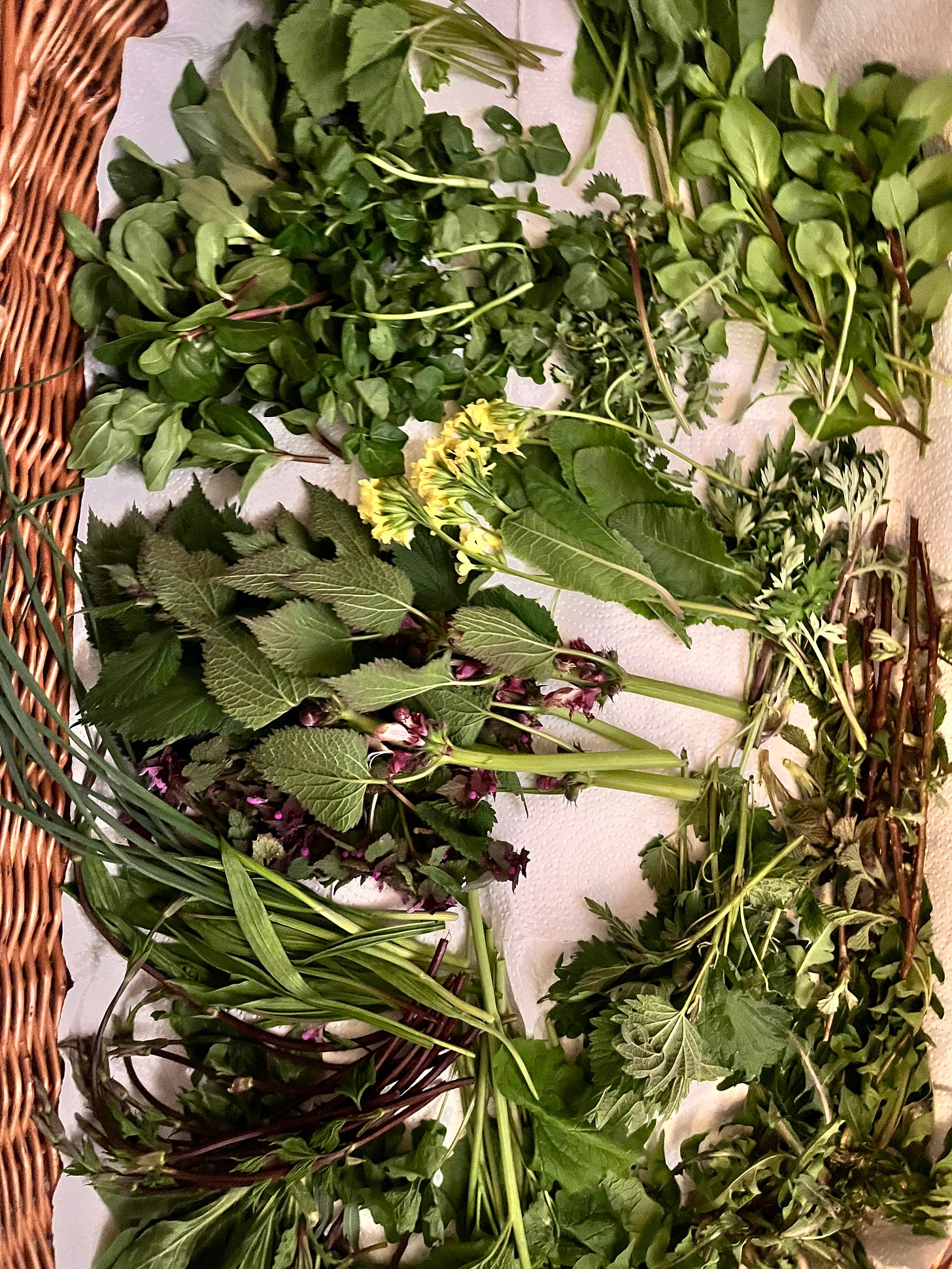
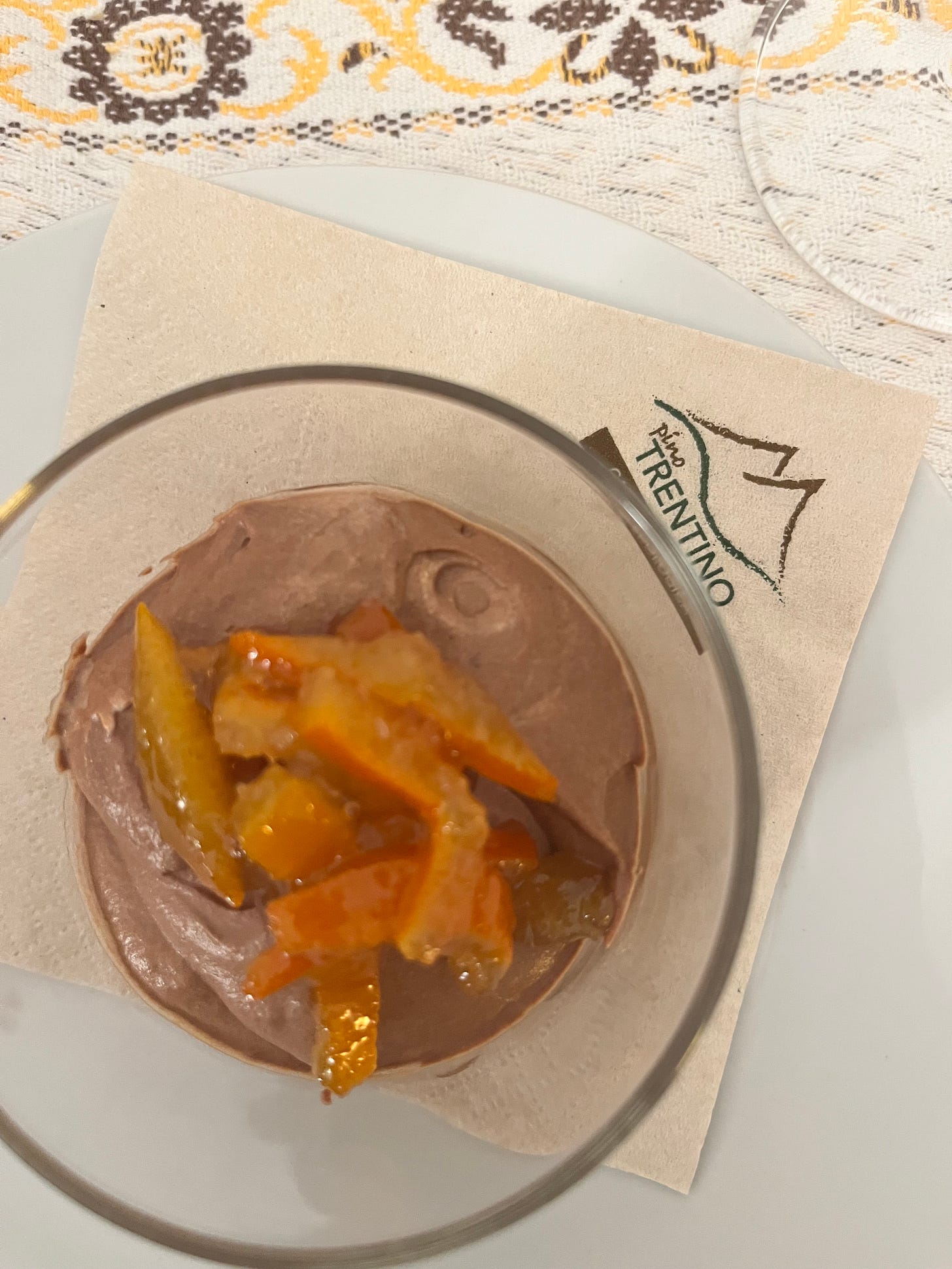


Recap of a glorious dinner! Cuccalar looks like a mistocchina, an unleavened mountain bread of the Bologna's area. Once, it was made with chestnut flour and water and it was a typical treat for poor people. I still today made a bunch of them for my mother-in-law who remembers when mistocchinaie arrived in town from the Apennines!
Your posts are always such a joy to read!